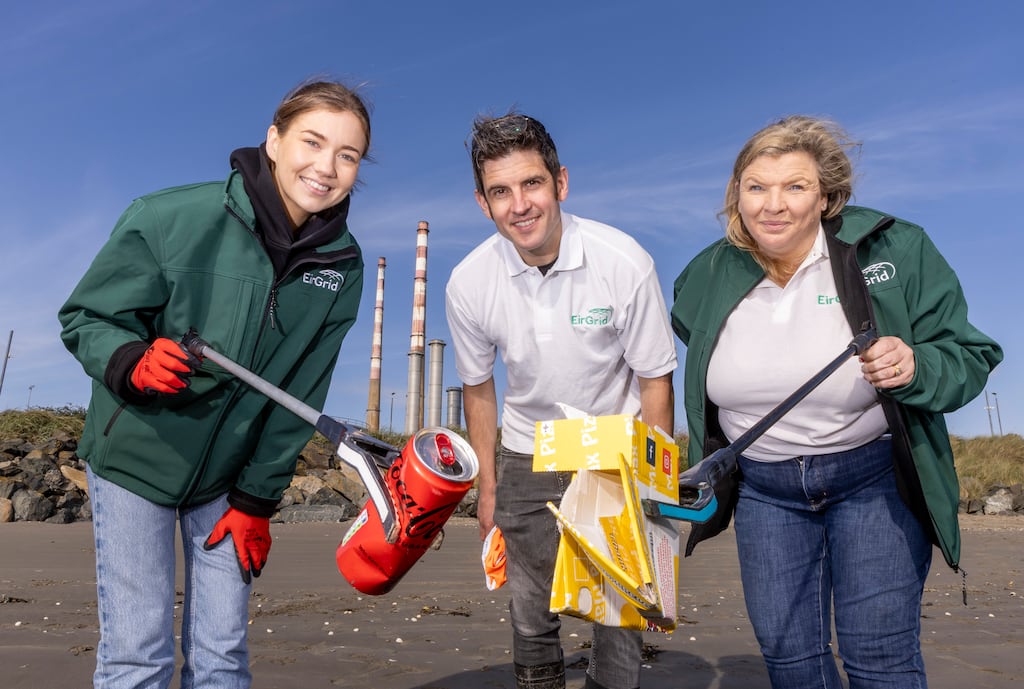EirGrid has accelerated its biodiversity activity since the Government declared a biodiversity and climate emergency in 2019.
“Ireland was only the second country in the world to declare twin climate and biodiversity emergencies back then,” says EirGrid lead senior ecologist Robert Fennelly. “We should be proud of that. Ireland has been at the forefront of tackling the biodiversity crisis at a political level.”
The severity of the biodiversity crisis has led to it being described as the sixth global extinction event, as Fennelly points out: “The last one was the dinosaurs 65 million years ago; this one is driven by human activity. But we can make changes to address it.
“At EirGrid, we are embedding biodiversity into the way we work. We are avoiding and reducing impacts on nature and restoring it wherever possible. I am genuinely very proud to work for an organisation that is a sincere and committed actor in this space.”
READ MORE
EirGrid has employed an ecologist for well over a decade. The organisation has embarked on a series of nature restoration projects since 2019. These include the East West Interconnector (EWIC) Biodiversity Project, in collaboration with Hitachi Energy.
“This is a piece of nationally important infrastructure,” Fennelly explains. “It carries enough power to supply 300,000 homes and has increased the capacity of the system for renewables.”
The biodiversity project assessed the effectiveness of meadow restoration at a converter station site in Co Meath. EirGrid commissioned Wetlands Survey Ireland botanists to carry out a multiyear monitoring project to survey sections of two fields managed differently – one cut twice, with the hand removal of weeds, and the other cut once and seeded with native-certified yellow rattle plants.
“We don’t use commercial seed for these projects,” Fennelly explains. “But we do use some yellow rattle seed. This can be very useful as it attacks grass roots and promotes wild flower growth.”
The results of the EWIC project will help EirGrid identify optimal evidence-based approaches to grassland restoration and will inform EirGrid and ESB’s existing substation restoration methods. The results will also be of interest to restoration scientists, who can review the findings online.
Another of the company’s biodiversity-focused projects is aimed at reducing injury to birds due to hitting power lines.
“We have been retrofitting overhead lines with bird flight diverter devices on the top earth wires to make them more visible to birds,” says Fennelly. “That will result in fewer bird strikes. But we can’t do it when the lines are live. We do it when the lines are being upgraded or other maintenance work is being carried out.”
In 2022 EirGrid established a new requirement for its consultants to implement nature-inclusive design proposals for capital projects. For example, at the Trien 110kV substation in Co Kerry, EirGrid and ESB have jointly developed a plan to use “green hay” to convert an area of former hardstanding to species-rich, semi-improved grassland.
Nature-inclusive design projects are subject to before-and-and-after monitoring surveys to measure success and prompt remedial action if required.
On underground cable (UGC) projects, in consultation with ESB, and with technical advice from arboriculturists, EirGrid is exploring planting shallow-rooted native shrubs over certain off-road cable routes.
Restoration of damaged hedgerows is also important. At passing bays, where road boundaries are temporarily removed to allow traffic flow during in-road cable laying, EirGrid is replanting with locally sourced, native species while avoiding species-rich hedges and mature trees wherever possible.
“One of our biggest challenges is how we to restore nature under assets on land that we don’t own,” Fennelly notes. “Most of our restoration work happens at substations. We can do things like tree planting and changing the way we cut grass there. Our colleagues in ESB are doing great work as well. A beautiful meadow in Leopardstown has been coaxed into life.”
That challenge is also being taken up in Europe through an approach known as integrated vegetation management. This involves managing the vegetation in the spaces beneath power lines – grid corridors – taking care of the ecological health of the affected area while still removing vegetation which could interfere with system security by touching a line. This can include selective removal of fast-growing trees and invasive species. and nurturing low-growing native plants. The aim is to create new habitats that thrive among these plant communities as well as to explore new economic opportunities for local stakeholders.
“It involves an agreed approach with landowners where there would be a contract in place for the management of the land,” Fennelly adds. “We are following developments in integrated vegetation management with interest.”
The offshore environment is also important and EirGrid is working with ARC Marine, a leader in marine ecosystem restoration.
“If two cables cross each other in the sea, we need to put one on top of the other and we protect them with concrete mattresses,” Fennelly points out. “They normally have no ecological value – but by making the mattresses porous and giving them a rough texture they can attract sponges and other sea life and become a new marine habitat.”
Challenges remain onshore as well, he explains: “Land is not cheap. In certain areas of Dublin, finding land to maintain for biodiversity in perpetuity is not easy. But we are committed to doing it. We can and will do more for nature. We are doing a lot but we are committed to doing more and acting urgently.”













